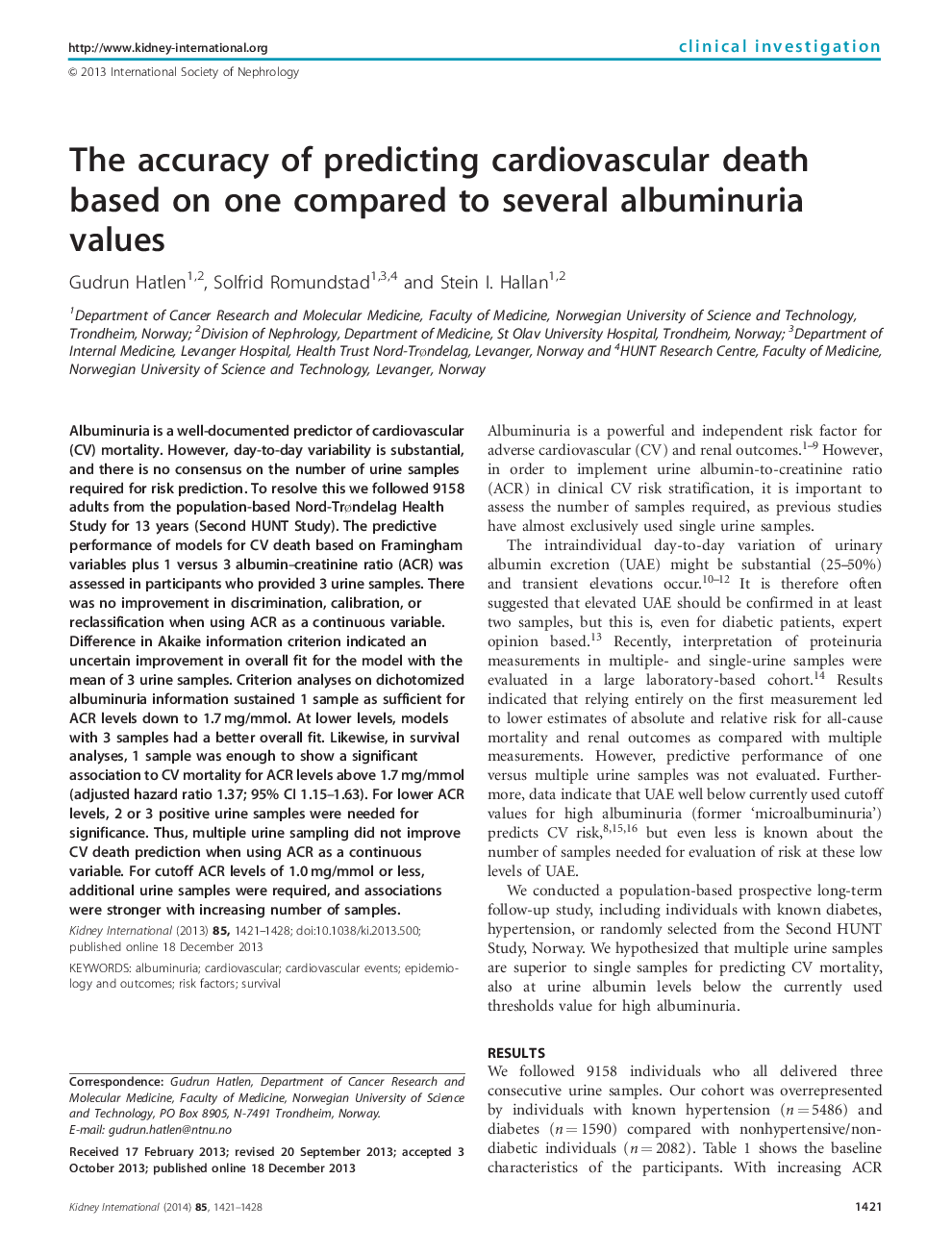| Article ID | Journal | Published Year | Pages | File Type |
|---|---|---|---|---|
| 6163623 | Kidney International | 2014 | 8 Pages |
Abstract
Albuminuria is a well-documented predictor of cardiovascular (CV) mortality. However, day-to-day variability is substantial, and there is no consensus on the number of urine samples required for risk prediction. To resolve this we followed 9158 adults from the population-based Nord-Trøndelag Health Study for 13 years (Second HUNT Study). The predictive performance of models for CV death based on Framingham variables plus 1 versus 3 albumin-creatinine ratio (ACR) was assessed in participants who provided 3 urine samples. There was no improvement in discrimination, calibration, or reclassification when using ACR as a continuous variable. Difference in Akaike information criterion indicated an uncertain improvement in overall fit for the model with the mean of 3 urine samples. Criterion analyses on dichotomized albuminuria information sustained 1 sample as sufficient for ACR levels down to 1.7 mg/mmol. At lower levels, models with 3 samples had a better overall fit. Likewise, in survival analyses, 1 sample was enough to show a significant association to CV mortality for ACR levels above 1.7 mg/mmol (adjusted hazard ratio 1.37; 95% CI 1.15-1.63). For lower ACR levels, 2 or 3 positive urine samples were needed for significance. Thus, multiple urine sampling did not improve CV death prediction when using ACR as a continuous variable. For cutoff ACR levels of 1.0 mg/mmol or less, additional urine samples were required, and associations were stronger with increasing number of samples.
Keywords
Related Topics
Health Sciences
Medicine and Dentistry
Nephrology
Authors
Gudrun Hatlen, Solfrid Romundstad, Stein I. Hallan,
